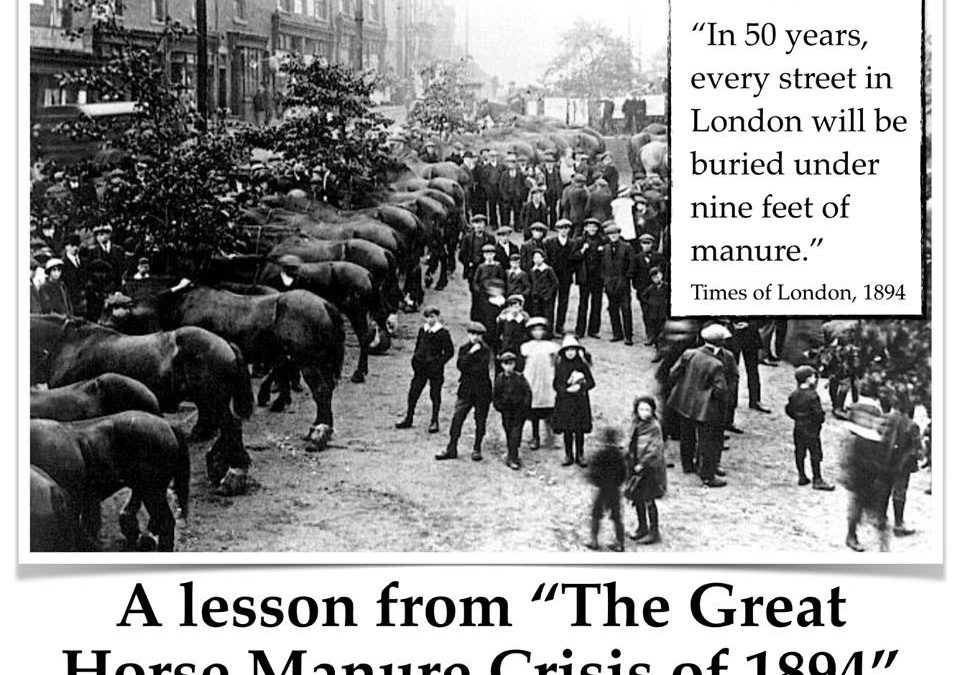
by Julia Felton | Aug 2, 2017
The thing I love about summer is the weather and the fact that all the plants and flowers bloom. It makes gardens look amazing and the good weather also means all the fields that I can see from my office window are green and verdant. Nature understands the seasons and that now is the time to start stocking up for winter. Animals start eating more so they have more body fat to keep them going through the winter. And my horses are no exception. The poor girls – Bracken and Thistle – only have to look at a blade of grass and they pile on the weight, whereas with the boys – Toby and Charlie – it is a slower process.
Regardless, the challenge is that as they eat more they also create more manure, which means I have more to clear out of their field each day. Currently I have to clear two barrowloads for manure every 24 hours. Given that the horses are currently living on a steep hill, and love to be at the bottom of the hill, my abs are getting a great workout each day, as I push these full barrows of manure up the hill.
So what does horse manure have to do with business?. Actually quite a lot it seems because the The Great Horse Manure Crisis of 1894 was the first big global urban crisis that the world’s largest cities faced in modern times.
By the late 1800’s London had over 50,000 horses moving cabs and buses every day. Each one produced 15 to 35 pounds of manure and 2 pints of urine daily. At the same time, New York had over 100,000 horses producing 2.5 million pounds of manure each day. No one could figure out how to handle all this manure, and in 1894 the Times newspaper predicted based on the increase in population and horses at the time “In 50 years, every street in London will be buried under nine feet of manure.”
The crisis led to the very first International Urban Planning Conference in New York. However, it was abandoned after three days – instead of the scheduled ten – because none of the delegates could see any solution.
Many of today’s challenges look similarly insurmountable. Anyone looking at current trends and trying to battle the inertia, outdated policies or plain bad decisions of many bureaucracies, corporations and governments can easily lose hope
So what happened to end the Great Horse Manure Crisis of 1894?
Within a matter of years, the entire crisis simply disappeared. While officials looked unsuccessfully for solutions, Karl Benz, Gottlieb Daimler and other inventors and entrepreneurs were creating the very first automobiles. They were looking outside the box at solutions that the urban planners could not even consider possible. After all who would have thought that cars would replace horses. That was such a preposterous idea.
Yet, by 1912, there were more cars than horses in London and New York, as it was cheaper to own a motor vehicle than a horse-drawn carriage and economics eventually ensured that horses were no longer central to the urban transport equation. In just over a decade the number of cars sold in the US rose from 4,192 per year in 1900 to 356,000 in 1912. By 1917, the last horse-drawn streetcar in New York had been retired. What was once thought to be an insurmountable threat to humanity’s existence vanished in little over a decade and the entire incident is now a barely remembered footnote in human history
“We can’t solve problems by using the same kind of thinking we used when we created them.” ~ Albert Einstein
Of course – the age of fuel-driven vehicles has created a whole new set of problems. But today, new inventors and entrepreneurs in green energy, health, education and all areas of society are coming up with new solutions at an increasingly rapid rate. In fact the biggest challenge for business today are the mavericks who are thinking outside the box and disrupting business. Just think Uber and Air BnB. Who would have thought that these two companies could completely change the face of the travel industry – and best of all they have done it without owning any assets!
There is no getting away from the fact the business is at a tipping point. The old structures are no longer serving us and as a business owner and leader you can either decide to focus at joining the groups protesting them or you can join the many who are already creating the new paradigms and be the change you want to see in the world.
What are you deciding? Will you become a conscious entrepreneur who challenges the status quo and stands for something more, or will you shrink and play small, staying stuck in the old ways of doing things. If the former, I’d love to hear from you as I specialise in helping leaders set out of their comfort zone to challenge the status quo and in doing so become a business pioneer.

by Julia Felton | Jun 14, 2017
“There’s no such thing as a self-made millionaire. Only TEAM-made millionaires”
In last week’s Wednesday Wisdom we discussed the different leadership positions and the fact that in the herd leadership is shared. A horse herd operates as a team and to my mind teamwork is the most effective way in business to create success. Being in business is tough and there is simply no way that you can do everything by yourself. Each of us has own our brilliance and working with team members enables you to focus on your brilliance whilst letting others do theirs. The net effect is that everyone is in a state called flow, which is the state of least resistance. Then business becomes easy and fun.
But how do you get the best out of team members and inspire them to give of their best to help your business grow and be successful.? The answer is to ask better questions. So are you a teller or a questioner?
In other words, when you’re working with your team members (or outsourcers) do you tend to tell them what to do or do you engage them in a conversation by asking questions?
If you’re like most entrepreneurial leaders, chances are you’re the former. If that’s true, then my question to you is “How’s that working for you?”
My guess is it’s not working out as great as you’d like it to. In fact, I find that most entrepreneurial leaders are pretty frustrated with the people they’re “leading.” See if any of the following statements ring true for you
- “They never do what I tell them to do!”
- “It always takes her ten times longer to do what I asked her to do. If she’d just listen to me, she could get it done in one tenth of the time it’s currently taking!”
- “I can’t understand why it’s taking him so long to do what I asked him to do.”
- “I can’t figure out why she just can’t follow my directions.”
- “I didn’t hire him to think. I hired him to do what I tell him to do.”
Ouch! And I fully understand those sentiments. As an entrepreneurial leader myself I understand why you want people to do what you want them to do in the way you want them to do it (after all, you are the BOSS, right? And it is YOUR company. And you do pay THE BILLS. And they do work for YOU, right?).
Furthermore, I get the whole driven part of the entrepreneurial personality. According to my Talent Dynamics profile I have lots of dynamo energy so, by personality, I like being a teller. I like saying, as chances are you do, “Here’s what I want you to do. Now, just go do it. No questions. No debate. Just get it done EXACTLY how I told you to do it.”
But, as you well know, that approach doesn’t produce the best results
The Problem With Being a Teller
What I learned, and hopefully you are as well, is that being a teller is a counterproductive leadership approach. Why? For a number of reasons. I’ll give you three.
- Telling doesn’t create buy in. As you know, people own what they help create, which, by definition means they don’t own what they don’t help create. So, if you or I say, “Billy, I want you to do X in Y way,” how much does he own that? Virtually nil. And if someone doesn’t own a task or project or process/procedure or event or strategy or tactic, the chances of them producing the best result will always be lower than if Billy is involved in creating the solution. Telling doesn’t work because it doesn’t create buy in or ownership.
Note: We’re not talking about following systems here. We’re talking about solving problems or creating something new.
- Telling doesn’t produce the kind of people you want/need. In other words, if you’re a teller, you’re NOT developing your people to be their best (whether that’s to be a better leader or problem solver or innovator or coach or process person, etc.). Or to put it another way, if you or I are always in the telling position, then we’re not creating independent thinkers. And if we’re not creating independent thinkers, then we’ll have to keep doing all the thinking—which leads to the third reason why you don’t want to be a teller.
- Telling doesn’t create leverage. If you or I still have to do all the thinking, then we’re not creating leverage. We’re simply creating more work for ourselves. We become the bottleneck to growth. If our people don’t own the task, then we have to invest more time in managing and leading the task. If our people aren’t really excited about a task or project, then more conflict will occur, which means we’ll have to invest more time. Or, if the only people we’re happy with are people who will just do what they’re told, then we’ll always put a lid on the quality of the kind of employee we can hire (which, again, kills leverage).
Any way you add it up, being a teller, just isn’t the smartest leadership choice you or I can make if we want to grow a fast growing business or organisation.
The Better Option
The better option, if you want to get the best from your team is to learn to connect, engage and communicate with them. Even if this isn’t your natural bent, you can learn to do this.
Next week I’ll be sharing my best tips on how to connect through using questions.
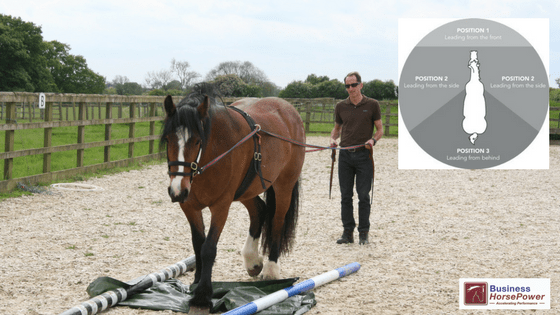
by Julia Felton | Jun 7, 2017
One of the biggest insights that has been coming up for people recently, whilst attending my leadership workshops, has been related to their preferred leadership position. Very often when we think of leadership we assume that the leader has to be at the front, leading the charge. And yes the leader does need to set the direction for the business, but they don’t need to stay in that leadership position all the time. Sometimes they might find that leading from the back, or indeed the side might be a better solution.
So What Are The Three Positions of Leadership?
In his book Dances With Horses, Klaus Ferdinand-Hempfling identified three positions of leadership that operate on a pull-push basis and when used appropriately can achieve significant results. Position One is Leading From The Front. This leadership position is most effective in an emergency, when you need people to follow you with no negotiation. It is also a great leadership position for the CEO of a business who needs to set the strategy and direction of the business and show others where to go. However, for team members it can dis-empower them as there is no flexibility to make decisions.
Position Three is Leading From Behind. From this position you can see everything happening in front of you and so can easily course correct if things go off track. It’s a leadership position where you effectively orchestrate the energy of the group and add momentum to what is happening. Team members feel empowered however, unless the team know where you are heading, chaos can erupt as everyone heads in different directions.
Leading From The Side is Leadership Position Two. It is a very collaborative style of leadership and a great place to be to form connection with your team members. It is the place of true partnership, and is a role that all great leaders must engage in to build relationships. However, if a leader stays in this position for too long nothing gets accomplished as no-one is leading the process.
The three different positions of leadership are derived from the way that a wild horse herd operates. Typically what you will find is that within the herd there is a lead mare who operates at the front of the herd and it is her job to find suitable grazing for the herd. She navigates where to go based on the weather conditions and the needs of her herd. Do they need food, water, shelter? Whatever they need she seeks out for them.
However, in the herd leadership is not a one horse job. It is shared and this is why you will always find the lead mare working in collaboration with the lead stallion. He positions himself at the back of the herd. From here he has great perspective on what is happening in front of him. He is easily able to keep an eye out for approaching danger and keep the herd united by influencing the direction and pace that everyone is moving in.
When grazing the lead mare will often mingle with the herd and adopt leadership position two whilst checking in to ensure the rest of the herd are safe.
Great leaders recognise that the art of great leadership is knowing when to adopt each leadership position, and be able to effortlessly move between the different positions as required. That said, in my experience leaders often have a preference for one position of leadership over another. Do you know what yours is?
Once you know your preferred leadership position you can then enlist the support of others with differing preferences to help you share the leadership role. After all I think we would all agree that in todays rapidly changing environment there is simply no way that just one person can shoulder all the leadership responsibility. It needs to be Shared amongst the team, so that everyone takes responsibility and contributes to the business success.
This is what one of my clients realised after learning about the three different leadership positions: “No wonder I’m exhausted. I’ve being trying to perform all three leadership roles myself. I now see how one minute I’m setting the business strategy (position one) then I’m running back to position three to energise the business, then back to position one, and then next position two. Now I recognise this I can see how I need to enrol others to help me share the leadership. This will give me more energy and focus and help us make our team more productive”.
If you would like to experience the three different leadership positions and discover your preferred role, then why not join me on my next open workshop, where we will be exploring how to Lead On-The-Hoof and develop the leadership skills you need to be successful in today’s environment. Simply click here to find out more.
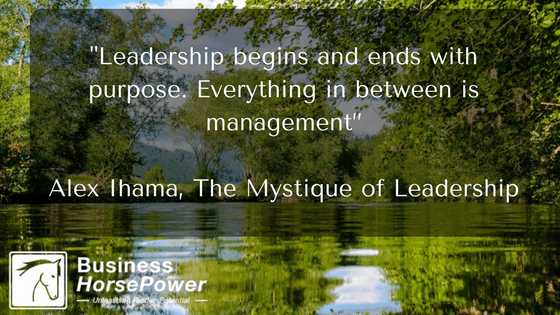
by Julia Felton | Apr 12, 2017
Have you ever stopped to consider what drives you? What gets you out of bed in the morning? What gives you motivation and inspiration to keep on going in the face of adversity? The answer to the question is purpose. The reason why you do what you do. And this is why everything in business starts and ends with purpose. If as leaders we don’t define the purpose for the business, then the business is like a rudderless ship. It has no direction, no GPS, and team members don’t know what is happening.
Purpose gives team members a shared vision. It unites the team behind a single cause. It brings clarity and certainty. It helps define the values for the business, as they need to be aligned with the purpose. And business values help decision making as they provide a framework that identifies which activities you will pursue. If following an opportunity or undertaking an activity conflicts with your values then it is easy to say No, as that action is out of alignment with what you stand for.
Purpose stands at the core of everything that we do in business and right now there is a growing trend, as companies become more consciously aware, for them to become purpose-driven. Purpose is being put clearly front and centre of everything a company does. And let’s be clear, the purpose is not self-serving, for example, to make more profits. That’s not motivating to anyone. Companies focusing on becoming purpose led are recognizing that business is a force for good and are focusing on how the business impacts and contributes to society generally.
An example of a company with a great purpose is Whole Foods. Their purpose, which they call their declaration of independence is clearly written on their website and pervades everything they do.
It states: Whole Foods Market is a dynamic leader in the quality food business. We are a mission-driven company that aims to set the standards of excellence for food retailers. We are building a business in which high standards permeate all aspects of our company. Quality is a state of mind at Whole Foods Market.
Our motto — Whole Foods, Whole People, Whole Planet — emphasizes that our vision reaches far beyond just being a food retailer. Our success in fulfilling our vision is measured by customer satisfaction, team member happiness and excellence, return on capital investment, improvement in the state of the environment and local and larger community support.
Our ability to instill a clear sense of interdependence among our various stakeholders (the people who are interested and benefit from the success of our company) is contingent upon our efforts to communicate more often, more openly, and more compassionately. Better communication equals better understanding and more trust.”
When you read this purpose statement you can’t help but feel inspired. It’s clear about what the company does, the change it is wanting to make in the world and how team members contribute to this. This purpose provides clarity, direction, focus and inspiration. As a team member you immediately know what is expected of you. A clear purpose is the fuel that ignites superior performance and delivers greater productivity and ironically profitability, as everyone is moving towards the same vision in a unified way and the business gets into a state of alignment which creates massive flow,
The leaders have clearly stated what needs to happen in the business and why. That’s why “leadership begins and ends with purpose. Everything in between is management”
I’d love to hear your thoughts on this and if you need any help defining the purpose for your business or just want to connect with me to discuss how purpose-driven companies are making a real difference, then I’d love to hear from you. Simply book a conversation with me here.

by Julia Felton | Jul 29, 2016
A few years ago the guru’s at Google set out to determine what makes a high performing team. Now we all know how great Google is at finding patterns in data series but the reality is that after years of research and analyzing 150 teams they came to the conclusion that simply there was no pattern. Initially they had believed that putting the best people on a project would get the best results but this simply was not true.
So what ensures that a team is high performing?
The Google executives frustrated with the lack of patterns in the data they collected, the researchers delved further into reviewing past academic studies on how teams work. In the literature, they discovered that psychological and sociological research kept using the term “group norms” when describing successful groups. Norms are the traditions, behavioral standards and unwritten rules that govern how we function when we gather. It was becoming clear that the most effective teams had ‘group norms’ that added to their success.
The challenge that the Google researchers now had was figuring out which ‘group norms’ were the most valuable. With further research, the group norm that emerged as one of the most powerful was ‘psychological safety’.
‘Psychological safety’ has been described by Harvard Business School professor Amy Edmondson as a ‘‘shared belief held by members of a team that the team is safe for interpersonal risk-taking.’’ “A sense of confidence that the team will not embarrass, reject or punish someone for speaking up,’’ Edmondson wrote in a study published in 1999
How to create Psychological Safety
Creating a psychologically safe environment for a team needs to be spearheaded by the leadership in the developing stages of a team. This is the reason that leaders play a more significant role in creating effective teams than the people who make up the team. I certainly know this to be true from my own experience. Some of the best teams I have been part of have been led by inspiring and compelling leaders. People who have been really inclusive and have led by example. People who have created an environment in which we have all felt valued, included and safe to share. A place where we can be authentic and be ourselves. A place were we don’t have to worry about putting on a our game face but rather can show up as our true self, devoid of any masks.
Leaders need to allow for the creation of an emotional safety net to develop within their teams. One way to create this environment is to carve out time for people to actually share their feelings and not just updates on the latest reports or budget numbers.
Leaders can take the time at weekly meetings to start by asking how people are feeling and why. The first few times these conversations happen, it will be beneficial if the leader shares first to set an example of the level and type of information to be shared. In one example from Google at an offsite retreat with a newer team, the leader started off the conversation telling his team that he had cancer and the effects it was having on his life. This opened the doors for in-depth sharing from the rest of the team.
As a leader showing up as authentic and vulnerable can really set the tone for the group and encourage others to open up and so have courageous conversations without fear of reprisals. (You can learn about the 6 C’s to Courageous Communication here). Being vulnerable goes a long way in developing strong trust bonds and trust is the basic building block of teams.
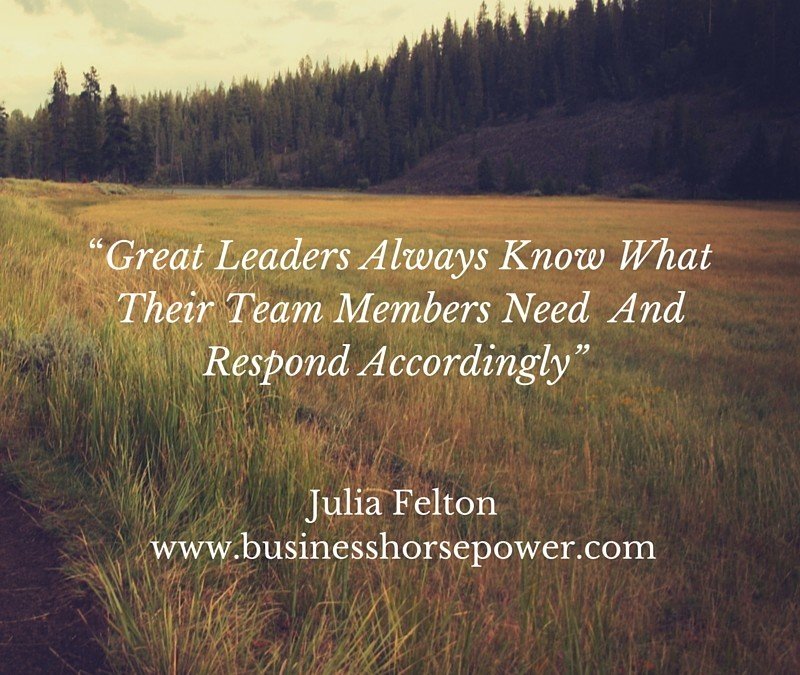
by Julia Felton | Apr 24, 2016
This week I have been reflecting on the fact that great leaders are masters at reading non-verbal communication and knowing exactly what their team members need, and what is going on for them, before they even ask for it. This is because great leaders are really grounded and present and tuned into their surroundings.
At this time of year my horses coats are molting and that makes them really itchy. The best solution for them is to roll around on the floor so they can give themselves a good scratch. Now two of my horses have been wearing rugs all winter so it is more difficult for them to get to scratch and roll. So it is no surprise that on a sunny day at the weekend, when I took their rugs off, they would want to roll. Knowing this I created a great experience for them where they could roll in a deep sandy area. They just loved it. A great example of knowing what your team need even before they ask for it.
As masters of being to read non-verbal communication clues, great leaders also recognise when team members are not “quite right” and functioning at their best. Great leaders read the energy of their team members to know something is amiss. We all have this ability. Just think about a time you went into a room and when you asked how everyone how they were, they replied fine. And yet you intuitively knew that something was up. You could do this as you were tuned into the energy in the room and intuitively something just didn’t feel right.
Just imagine the impact you can make on a team member when you acknowledge this fact and then take steps to help them. It really shows you care, and this simple act can go a long way to foster team engagement and motivation.
So today, please pay attention to what is happening with those around and seek to acknowledge what others need before they have to articulate it. This will bring untold benefits.
Have a great week and please share on the facebook group what happened for you.
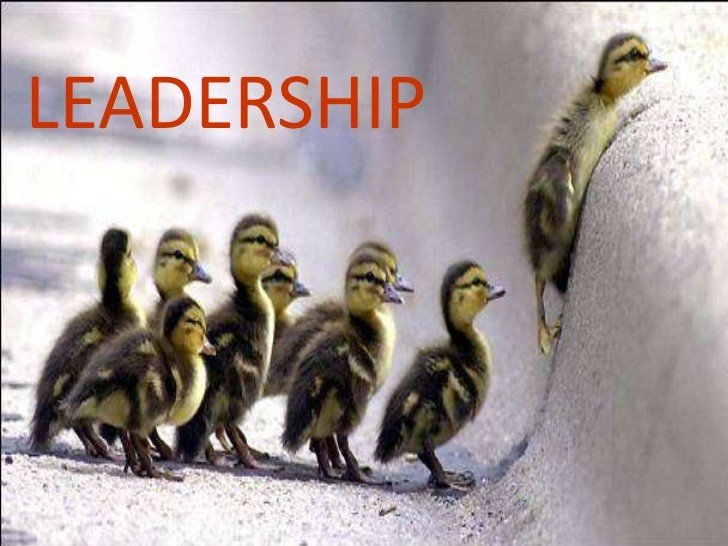
by Julia Felton | Apr 10, 2016
‘Before you are a leader success is all about growing yourself. When you become a leader, success is all about growing others.’ Jack Welch
A recent survey conducted by Emergentics International revealed that Leadership development is the number one priority of HR and organizational development leaders, with 25% of respondents putting it at the top of their priority list. With organizations needing to meet ever-higher financial goals and growth targets, the emphasis on people development provides a window into the way companies are seeing their ability to rise to the top.
The emphasis on talent development and management over competencies like innovation and tactical elements like metrics points to a realization that positive advancements in organizations must start with people. The second highest response for organizational priority was employee engagement, at 22%.
So what is leadership? The Oxford Paperback Dictionary defines a leader as ‘one whose example is followed’. Leadership is that elusive quality that companies are looking for and yet, in my opinion, is so often lacking in organisations. Given the multitude of companies offering leadership training and the circa £3billion spent on external training annually in the UK, how come our companies are not some of the best performing in the world? To my mind, leadership and management are too often confused. We expect managers to lead and yet leadership and management involve completely different skill sets. Indeed, the Peter Principal invariably plays out in organisations. The Peter Principal states that ‘people are promoted to the level of their incompetency’. This is why all too often people get promoted only to fail in their managerial role because what they really need are leadership skills.
Complete leadership starts with the vision and builds relationships with the people that share the vision and who will take on the task of achieving the vision. This differs from management which uses structures, rules and processes in order to control and predict results in a more stable situation. Frank S. Greene notes that ‘the success of management is seen in the industrial empires where people can be used interchangeably and as replaceable parts.’
In order for any business to be successful it needs strong leaders and particularly so in this age of globalisation because whilst an individual might be able to mask their lack of leadership skills in a small organisation, in my experience once they have to manage across multiple locations they will be found out. Great leadership involves developing a blend of vision, relationships and execution and as an organisation expands, the need for the leader to communicate that shared vision to a diverse set of people becomes paramount because unless the vision is shared, the organisation will never meet its goals. It will become like a ship bobbing up and down on the ocean with no clear direction of where it is heading and wonder why the business fails to move forwards.
Horses Always Ask – Who is Leading?
So how can Horse Assisted Coaching help people develop leadership skills? The answer lies in the fact that horses are always looking for a leader. As a prey animal, the horse always has to be aware of imminent danger or else he could end up as someone else’s lunch. This means that a horse always has to be alert to any danger in his surroundings and also be in a position to run away should that danger present itself. To ensure that the horse can survive being a prey animal it has evolved so that its natural behaviour and physiology can keep it as protected as possible. This is why horses have eyes on the side of their head, as it gives them nearly 360 degree vision to see any approaching danger. They are also acutely aware of any changes in their environment, as this could herald the onset of approaching danger. The sense of community and camaraderie they gain from living in herds also helps keep horses safe. I’m sure you’ve heard of the idiom ‘Safety in numbers’ – well, this is the premise that horses work from. The more of them that are together, the more eyes they have looking out for danger and so the safer they feel.
It is because of this desire to stay safe that a horse is always looking for a leader. Can you imagine living by yourself, never being able to rest and relax for fear of being attacked and eaten? This is a tiring place to be and the reason why a horse is willing to let us take up the leadership role with them. However, and this is a really big thing, we must prove to be a leader who can be trusted and who knows what they are doing. If we have no clarity or certainty and don’t evoke a sense of trust from the horse then he will not let us lead him and he will take over the leadership position. You see, unlike people who might be quite polite when their boss is not being a clear, decisive leader, a horse has no option but to act, his life depends on it, whereas in a business we continue to tolerate poor leadership until such time that the leader is removed from that position – ironically often promoted to another position.
Different from humans, horses don’t follow blindly, yet they are looking to be led. They cannot be coerced or influenced, they choose to follow. Horses have survived for thousands of years due to their ability to get along with, and depend upon, one another. They test each other to establish their position within the herd, deferring only to other horses they feel will keep them safe. In a world in which money, control and status are non-existent, horse leaders respond immediately to the thoughts, feelings and sometimes hidden agendas of those around them, and communicate with authority, purpose, authenticity and confidence – all without ‘saying’ a single word. Like some employees, horses can either be willing participants or resentful ‘herd members’, making them ideal partners for teaching self-leadership and teamwork.
Want to learn more about how horses can help you make systemic leadership changes in your organisation, then give us a call or connect with us at connect@businesshorsepower.com

by Julia Felton | Nov 27, 2015
Just because you have the title of leader doesn’t make you are a leader. And just because you don’t have the title of leader doesn’t mean you aren’t a leader. To my mind everyone in the organisation is a leader which is why in my new book The Alchemy Of Change: The Key To the Future Lies In The Past I explore the concept of Shared Leadership.
So what is Shared Leadership?
Shared Leadership is the concept that, given the rapidity of change, there is no way one person can know about everything in the business. For a business to be successful, leadership and decision making needs to be shared.
The old paradigm of command and control leadership simply won’t serve us in this The Big data era, where collaboration is a necessity. There is simply too much going on for one leader to be able to manage it all. This in itself creates blind spots for businesses, which is why a more flatter, more collaborative style of leadership, which is more responsive is required.
When Shared Leadership is adopted within the organisation then everyone looks out for the needs of the businesses, not in a self-serving ego way, but from a place of contribution to the community. Everyone is focused on the goal and works as a team to achieve this. It always surprises me that business has not taken a leaf from the world of sport. In a sports team there is no place for individual performance. Success only comes from the collective performance of the team.
The famous basketball player Michael Jordan knew this when he said: “Talent wins games but teamwork and intelligence wins championships”. Michael understood the power of collaboration and how only by all team members working together could the team win the game.
Interestingly, herds of wild horses also understand the power of Shared Leadership. The herd is structured with two leaders – the lead mare and the stallion – and they work in collaboration to keep the herd safe. They seek out food, water and shelter for the herd but the herd members do not solely rely on the leaders to keep them safe. Every herd member has a responsibility to maintain the safety of the herd and so contribute to its survival.
The herd has a shared purpose and focus, which quite simply is to stay alive. As a prey animal the horses main challenge is how to avoid being someone else’s dinner! It is this shared purpose and vision which enables the herd to become self regulating. There is no space in the herd for self-serving members and in fact they are driven out of the herd. This is the worst punishment ever because being evicted from the herd means that you are all alone, and this is not a safe place to be because its challenging to protect yourself when you are isolated from others.
So when is business going to wake up to the need for Shared Leadership? I wonder how much more productive and profitable an organisation could be if everyone was working from the same page towards the same goals and where the result of the team was more important than that of the individual.
The 2010 Burston-Marsteller?IMD Corporate Purpose Study revealed that organisations that focused on having a strong well communicated corporate purpose that everyone in the business got behind delivered a 17% improvement in financial performance compared to those organisations that didn’t. Wow, what a load of resources are being wasted in business simply because of the self serving stance that many people are taking.
Imagine the possibilities if everyone in business worked more effectively together as a high performing team. I wonder what we all could achieve.
If you’d like to learn more about the principles of creating a high performance business with Shared Leadership then please connect with me for a complimentary consultation.
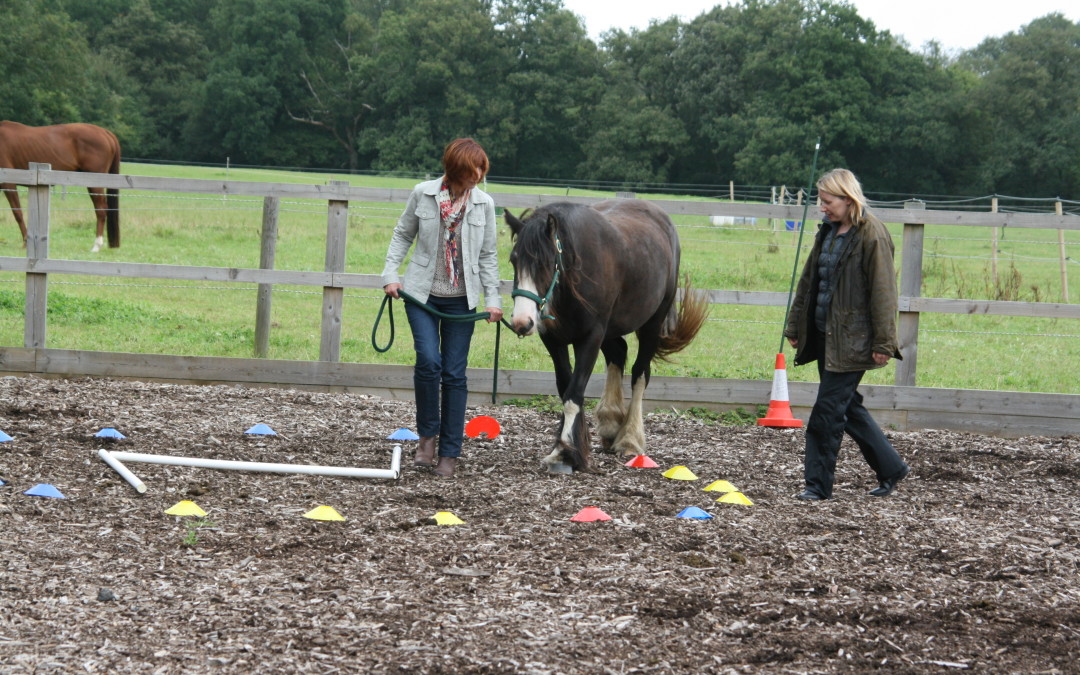
by Julia Felton | Nov 12, 2015
At a time when training budgets continue to be under pressure I am always amazed by the fact that few organisations are prepared to look out of the box for more innovative solutions to developing their talent. In the 2015 Deloitte Human Capital Survey 78% of companies cited leadership development as their biggest challenge. And yet we continue to teach leadership in the same way and wonder why we keep getting the same results. How mad is that!
Einstein summed it up well when he said : “The definition of insanity is doing the same things over and over again and expecting a different result” and yet this is what many companies continue to do when it comes to training.
I would like to propose a different approach, one that is making a profound impact and generating significant ROI for its attendees. It involves getting out the classroom and learning in a different way. Experiential learning is so effective because it’s a process of learning by doing. What makes it unique is the opportunity to learn from your own experience, and no one else’s.
Let’s take a quick look at some of the most important reasons why experiential learning is effective:
- Sense of equality – All participants in an experiential learning program are equal in terms of their knowledge and skills with regard to the tasks at hand. This creates a sense of equality among the participants, which is favourable for effective learning.
- Collaborative environment – Experiential learning programs help you learn how to quickly build a relationship. When resolving unfamiliar challenges collaboratively with a group of unfamiliar people, you quickly find ways to build relationships. This strengthens your communication, collaboration and interpersonal skills.
- Unfamiliar situations – In experiential learning, you are taken out of your comfort zone. When handling unfamiliar challenges, you learn how to focus on task and process related themes, and how to organize yourself around a challenge. Learning becomes more effective because most of your prior experiences are irrelevant in the present context.
- Meta learning – The ability to review your process of learning is referred to as Meta learning. When you participate in experiential learning programs, you get an opportunity to improve your Meta learning skills. With improved focus on your process of learning, you get the space and flexibility to review your leadership skills, problem solving skills, communication skills and so on.
- Crisis management in safe environment – You learn how to manage crises in an environment that is safe and supportive. This enhances your crisis management skills in real life situations.
- Whole body learning – Rather than only listening and viewing, whole body learning method requires a learner to perform physical movements. Experiential learning incorporates kinaesthetic learning methodology, thus ensuring holistic improvement of your mental, behavioural and physical strengths.
I think Confucius summed up the benefit of experiential learning when he said: “I hear and I forget. I see and I remember. I do and I understand.”
There are many types of experiential learning programmes but to my mind the most cost effective and impactful leadership programmes are those with horses. The horses provide unbiased feedback on how the delegates show up. Are they inspiring, compelling and energetic leaders who the horse (and other team members) would want to follow, or do they lack focus, direction and are generally unsure of themselves.
Since horses are masters at reading body language they challenge the delegates on how congruent and authentic they are. Are their words and deeds aligned so that trust can be built? Do they feel empowered and listed to? Through a series of exercises the horses show delegates how to BE a leader rather than DO leadership and thats something that can’t be learnt in the classroom.
So if you are looking to develop your leadership skills, why not give us a call, and we can explore what is possible.

by Julia Felton | Oct 14, 2015
Almost a century after horses were the almost only source of transportation on our streets it is surprising that in this digital age, we still measure the power of a car engine in ‘horsepower’. Even today, when probably the only time most people will see a horse in on a Saturday afternoon at the races, horses still hold a fascination for everyone. For author and business consultant, Julia Felton she believes we can learn so much from them that every business should have one on its payroll.
Julia is the Herd Leader of Business Horsepower Ltd, a company that grew out of her realisation that the horses she keeps on her land in Yorkshire had become her best coaches in teaching her business and life lessons.
According to Julia ” I realised that my herd of horses live in a state of harmony. They act as a single unit and there is collaboration and shared leadership. A wild horse simply cannot afford to live alone, it is simply too dangerous and so the herd band together with a shared purpose of survival. To act in silo groups would be detrimental to the overall success of the herd, and yet, in the corporate world, that is what I witness in business day in day out.”
Drawing from this, and her extensive corporate experience growing effective teams at Andersen and Deloitte, she has just published a new book ‘The Alchemy of Change in which she reinvents ancient wisdom, and the forces of nature, to unlock the potential of leaders and teams.
in the same way that nothing happens in nature on its own, she has created the concept of the Joined-up business. Using an impressive array of tools, strategies and processes Julia helps the reader to unleash their powerful potential and “grab the reins” of their business and inspired everyone in it to work together with a singular purpose.
By each individual focusing on their unique natural strengths individuals, teams and organisations are able to become more engaged and motivated. Collaboration reigns and competition is banished. The result is increased productivity and profitability as twice as much is achieved with significantly less effort.
Her innovative coaching and development programmes, for individuals, teams and organisations, are inspired by nature and her herd of horses. She is committed to creating positive transformation and getting outstanding results through streamlining and systemising businesses so that all the aspects of the business are aligned and no resources are wasted.
During her 12 year career at Andersen and Deloitte she was responsible for developing a business from an idea on a piece of paper to creating and then building a million pound business unit, that became firmly established as the global market leader, providing business intelligence solutions to the hospitality industry. Her unique ability to work at both a strategic and tactical level means that she is sought after as a high performance consultant, mentor and coach.
Julia holds a degree in Hospitality Management and is a member of the Chartered Institute of Marketing and the Institute of Leadership. She is also a Fellow of the British Association of Hospitality Accountants. As a Master Coach and qualified NLP practitioner and trainer she enjoys mentoring young entrepreneurs and recently became a Young Enterprise Coach. She is also a Talent Dynamics Performance Consultant, a Trusted Sales Dynamics Coach and a Certified Money and Marketing Business Coach.
Julia’s passion is horses and as a natural horsemanship coach and a Licensed HorseDream Partner she often incorporates sessions working with the horses into her Business HorsePower leadership and team working programmes and Unbridled Success Retreats.
Julia is an accomplished international speaker and in addition to The Alchemy of Change: Ancient Wisdom Re-invented To Unleash The Potential of Leaders and Teams she is the author of Unbridled Success – How the Secret Lives of Horses Can Impact Your Leadership, Teamwork and Communication Skills. Her keynote speech Straight From The Horses Mouth: Leadership Lessons From The Barn To The Boardroom is provocative and thought-provoking, making her a sought after speaker.
Julia will be holding a book launch and masterclass event tonight – Wednesday 14th October – from 7-9pm at Waterstone’s Leeds.
For press, media and general enquiries please connect with Julia via connect@businesshorsepower.com. We can’t wait to hear from you.














